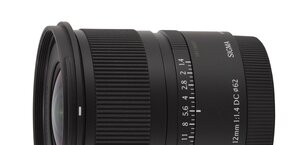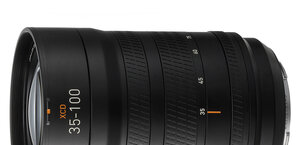Sigma A 105 mm f/1.4 DG HSM
4. Image resolution
Let’s check how the tested Sigma A 105 mm f/1.4 DG HSM compares – a graph below presents its results in the frame centre.

Please Support UsIf you enjoy our reviews and articles, and you want us to continue our work please, support our website by donating through PayPal. The funds are going to be used for paying our editorial team, renting servers, and equipping our testing studio; only that way we will be able to continue providing you interesting content for free. |
- - - - - - - - - - - - - - - - - - - - - - - - - - - - - - - - - - - - - - - - - - - - - - - -
The results are sensational up from the maximum relative aperture where you get 42 lpmm. That level not so long ago was solely reserved for the best primes and only on stopping down. The maximum values you see by f/2.8 as the lens exceeds a level of 48 lpmm. Could you wish for more?
Actually you could. It was a bit of a joke– the graph above shows the performance but on the edge of the APS-C/DX sensor, not in the frame centre. Now let’s be serious and analyze the proper frame centre resolution graph.

Previously we called the resolution sensational; what we are supposed to say now, when by f/1.4 you see a result of 44.4 lpmm, easily the best result reached by any f/1.4 lens in our tests at the maximum relative aperture so far. As if it wasn’t enough, by f/2.8 you get to 51.3 lpmm, a value by a hair’s breadth lower than the record of the Sigma A 1.8/135. In fact both these results are, within the margin of error amounting here to about 1 lpmm, the same.
As we’ve already started the comparison game let’s have a glance at another graph below.

It is a duel on the highest level – all instruments are performing sensationally well. Still it has to be noticed that Canon and Nikon lenses are defeated by all three Sigma devices and each of these are unique. The 85 mm model is better than the 105 one by f/2.0, the 135 mm lens fares exceptionally well everywhere with a record by f/2.8 and the 105 mm device, tested here, reaches a record value by f/1.4 and almost a record by f/2.8. It fares very well despite the fact that it is a lens more difficult to construct and correct than the 135 mm f/1.8 lens.
The performance on the edge of the APS-C/DX sensor we already covered at the beginning of this chapter, pretending these were results at the centre. The only thing left is the edge of full frame. And here the boredom creeps in – sad but true, we have nothing new to add. The results are once again excellent as the lens reaches 35 lpmm near the maximum relative aperture and distinctly exceeds 40 lpmm in the f/2.8-f/5.6 aperture range.
The summary is going to be short. The new Art lens is another brilliant device in the Sigma line-up.
At the end of this part of the test traditionally we present crops taken from photos of our resolution testing chart saved as JPEG files.
| Canon 5D MkIII, JPEG, 105 mm, f/1.4 |
 |
| Canon 5D MkIII, JPEG, 105 mm, f/2.8 |
 |






